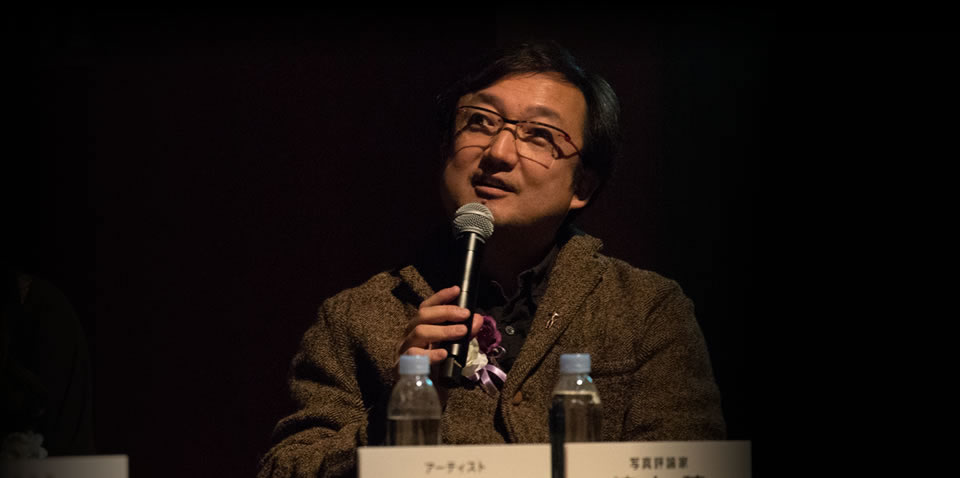The 2017 (40th edition) New Cosmos of Photography public Grand Prize selection meeting took place on Friday November 10, 2017 at the Tokyo Photographic Art Museum.
As the domain of the camera has grown from film to digital and from still images to video, the New Cosmos of Photography’s submission system has been opened up to accept entries from around the world. This allows us to support creative works and creative activities of artists that incorporate fresh perspectives, regardless of genre.
For this year’s contest, we welcomed four new judges — Alec Soth (photographer), Sandra Phillips (curator at the San Francisco Museum of Modern Art), Dayanita Singh (artist), and Yoshihiko Ueda (photographer) — and three previous judges — Hiraki Sawa (artist), Tomoko Sawada (artist), and Minoru Shimizu (photo critic). The seven judges selected seven Excellence Award winners and 11 Honorable Mention Award winners from 1,705 entrants.
During the public Grand Prize selection meeting, the seven Excellent Award winners — Kanako Shokuda, 214, Ai Mizobuchi, Hana Sawada, Trond Ansten & Benjamin Breitkopf, Azusa Yamaguchi, and Giancarlo Shibayama &mdash gave presentations and took questions from the judges. After the presentations, the judges deliberated and eventually selected the group of Trond Ansten & Benjamin Breitkopf as this year’s Grand Prize winner.
The selection meeting kicked off on Friday November 10 at 3 p.m. amid a singular atmosphere of elevated expectation and nervousness. With tense expressions, the seven Grand Prize candidates took their seats, after which the six judges made their way to the podium (Alec Soth was absent). Canon Inc. Managing Executive Officer Masaaki Nakamura delivered the opening address.
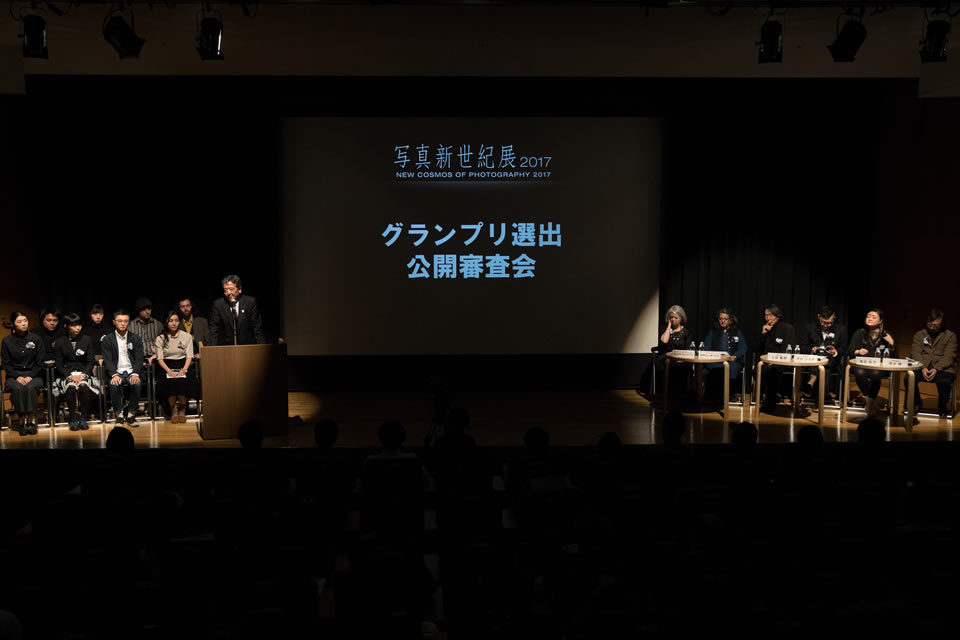
The seven Grand Prize candidates were given 10 minutes each to make a presentation, in which they described in their own words the background to and the creative intent of their works along with their thoughts about their works. After each presentation, the judges offered both praise and sharp criticisms of the works and posed questions to the candidates, who responded with ardent answers.
You can see the state of the meeting with movie.
After the presentations, the judges retired to a separate room for about 80 minutes to deliberate and select the Grand Prize winner.
At the awards ceremony, the team of Trond Ansten and Benjamin Breitkopf was announced as the 2017 Grand Prize winner. The pair received one million yen in prize money, and, as a bonus prize, a new Canon EOS 5D Mark IV digital SLR camera with an EF 24-105L IS II USM lens kit.
Last year’s Grand Prize winner, Kim Sajik, presented the winners with a bouquet and offered her congratulations: “I watched your work with great interest in its narrative, metaphors, and image creation. As a fellow creator of artworks, I believe there are many new discoveries and recognitions in the similarities and differences we feel. I hope to make use of today’s encounters and connections in creating future works.”
On accepting their prize, Trond Ansten and Benjamin Breitkopf said: “We are full of both surprise and gratitude that we won the Grand Prize. We’d like to take this opportunity to thank everyone on our photography crew who helped us shoot this film. We will continue to devote ourselves to new projects and making new works.”
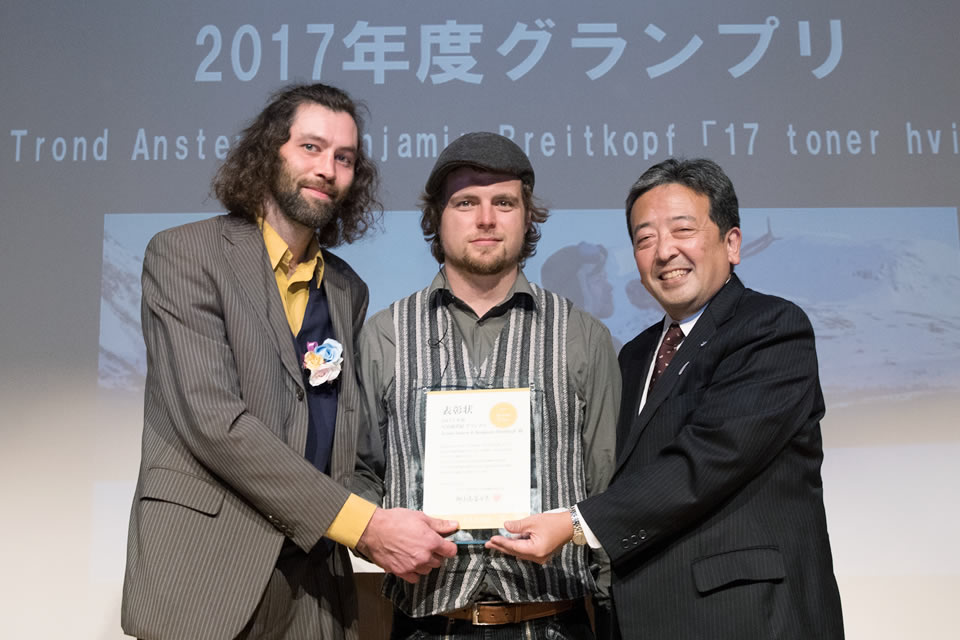
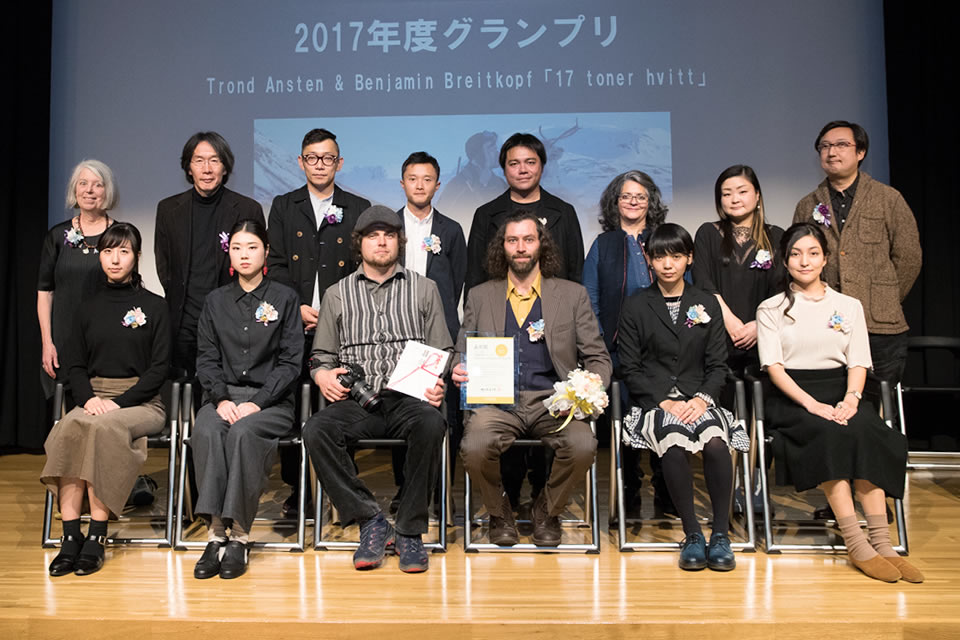
The judging took a really long time. The reason why I originally chose these two was the strength of their images and their talent in creating images. As the work unfolds, it mixes in fiction and introduces symbols and these are expressed directly in some places and indirectly in others. All of these elements are edited skillfully in a sequence and brought together into one cohesive work, resulting in a movie of very high quality. In the end, what swayed the judges’ votes was the creators’ technique, talent, and the results of what they did. I look forward to seeing their future creations.
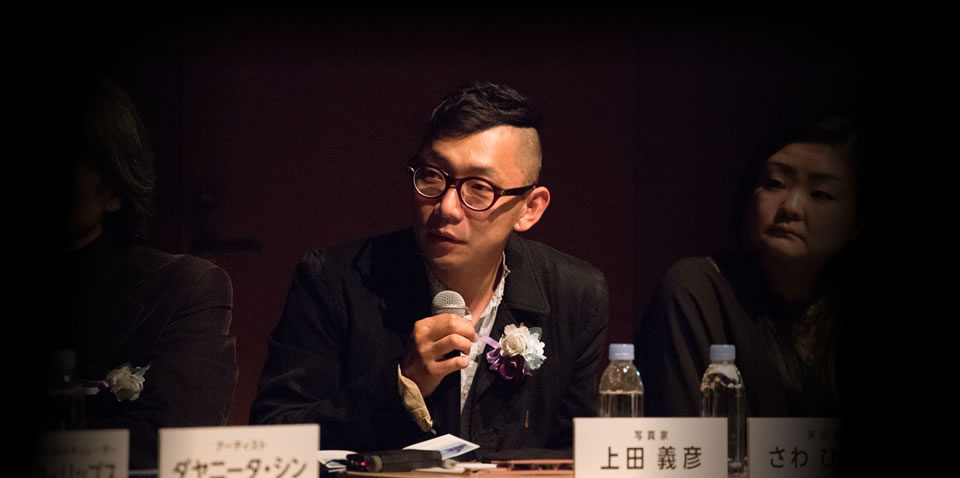
One reason why the judging took so long was that this prize is a prize for photography. I felt a kind of misgiving when choosing an Excellence Award winner this year — namely, that more and more entrants are not taking their own photographs. Instead of taking photographs, these entrants use images downloaded from the Internet as their raw material to create conceptual works questioning the nature of photography. Others go a more analog route, picking out photos at flea markets for their components. In any case, there’s been a huge jump in people using photographs.
On the other hand, this prize is not about taking photographs like a commercial photographer and praising their technical merits. Given the enormous breadth covered by photography today, the judges struggled mightily over what photography should be and what message we should send with this Grand Prize. If this were a prize for art, I would have no trouble awarding the Grand Prize to Hana Sawada. But in consideration of how much creativity was put into the processes of creating images and either editing them or looking at and assessing photos, this year we decided to select a work for the Grand Prize that possesses all of these qualities without exception. It felt like a tiny experiment — deciding what kind of artist to give the Grand Prize to — took place at this year’s selection meeting, given that the New Cosmos of Photography is a vanguard prize that points to an age in flux.
The winning work is less a movie than a string of several moving pictures arranged in a sequence. I think it is deserving of the Grand Prize because of the power of the image it creates; the questions it raises of whether a distinction between video and still images is really essential; and — in the choices of how to edit and present its elements — how well it balances these elements.
Nevertheless, this does not mean that still images are passé or that expressions specific to the viewing of photographs are on the way out. Some may view as conservative our hesitation to not fully embrace the somewhat overdone trend of entrants merely using photographs without taking any photographs or creating images of their own. But our restraint in not going that far was informed by a desire to cherish the creation of images and to not discard it out of hand.
The 2017 Grand Prize winner, in a way, surprised us too. But we are extremely satisfied with the result and hope it stands as a multifaceted message.
